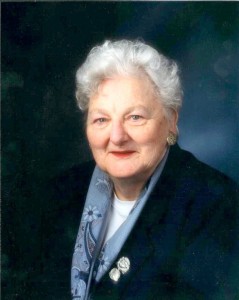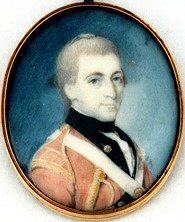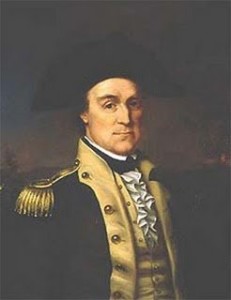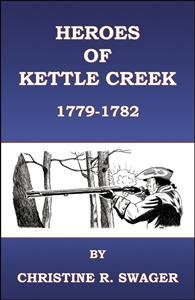 Welcome to my blog, and Happy Fourth of July! The week of 2 July – 9 July, I’m participating with more than one hundred other bloggers in the “Freedom to Read” giveaway hop, accessed by clicking on the logo at the left. All blogs listed in this hop offer book-related giveaways, and we’re all linked, so you can easily hop from one giveaway to another. But here on my blog, I’m posting a week of Relevant History essays, each one focused on some facet of the American War of Independence. To find out how to qualify for the giveaways on my blog, read through each day’s Relevant History post below and follow the directions. Then click on the Freedom Hop logo so you can move along to another blog. Enjoy!
Welcome to my blog, and Happy Fourth of July! The week of 2 July – 9 July, I’m participating with more than one hundred other bloggers in the “Freedom to Read” giveaway hop, accessed by clicking on the logo at the left. All blogs listed in this hop offer book-related giveaways, and we’re all linked, so you can easily hop from one giveaway to another. But here on my blog, I’m posting a week of Relevant History essays, each one focused on some facet of the American War of Independence. To find out how to qualify for the giveaways on my blog, read through each day’s Relevant History post below and follow the directions. Then click on the Freedom Hop logo so you can move along to another blog. Enjoy!
 Relevant History welcomes back Dr. Christine Swager, who writes about actions in the south during the Revolutionary War. In the six books she has published, she has covered the militia contributions to the success of the Patriot cause. Although her books are historically accurate, she writes for a general readership, especially teachers and students. She is determined to make history interesting as well as informative. To recognize her work, the Southern Campaigns of the American Revolution awarded her their Lifetime Youth Achievement Award. She is also a recipient of the National Society of the Sons of the American Revolution’s Martha Washington Medal. Look for her on Facebook.
Relevant History welcomes back Dr. Christine Swager, who writes about actions in the south during the Revolutionary War. In the six books she has published, she has covered the militia contributions to the success of the Patriot cause. Although her books are historically accurate, she writes for a general readership, especially teachers and students. She is determined to make history interesting as well as informative. To recognize her work, the Southern Campaigns of the American Revolution awarded her their Lifetime Youth Achievement Award. She is also a recipient of the National Society of the Sons of the American Revolution’s Martha Washington Medal. Look for her on Facebook.
*****
On the hot summer night of 18 August 1780, two hundred armed men left their militia camp on the Broad River in South Carolina, and moved furtively through the area until they reached the road. Then they spurred their horses toward their objective, forty miles south. They were intent on attacking the enemy at Musgrove’s Mill on the Enoree River. An encampment of local Loyalist or Tory militia (settlers loyal to the King) was guarding a hospital site where wounded British soldiers were being housed. The site was at a ford which allowed passage for British troops stationed at Ninety-Six to cross the Enoree River and attack the settlers farther north.
The British wounded at Musgrove’s Mill were casualties of a month of skirmishes in the area north of the Enoree and most of those same Patriot militia who were headed in their direction had inflicted those wounds. Now they would finish the job. They expected to strike at dawn and overwhelm the unsuspecting Loyalist militia.
Who were these determined men? There were three commanders: Col. Elijah Clarke with his Wilkes County Militia from Georgia; Col. Isaac Shelby with his Over Mountain Men from what is now East Tennessee, (although at that time it was Western North Carolina); and Col. James Williams of the Little River Militia in South Carolina with men from other units. Col. Williams and his militia lived south of the Enoree River within a few miles of the British post at Ninety-Six. Their homes and families were threatened. Other locals who lived in the area and shared their concerns joined them.
Pivotal battle, patriot victory
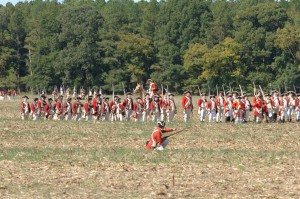 However, they encountered a Tory patrol so the element of surprise was lost. To complicate the situation, they learned upon arrival that the night before, a contingent of soldiers from Ninety-Six had arrived and was camped at Musgrove’s Mill. Now they were seriously outnumbered by a force of trained, experienced and disciplined British Provincials. With the horses too fatigued from the long ride in the heat to affect a retreat, the Patriots were determined to fight. They threw up a rude barricade on the crest of a hill some distance from the British camp. To lure the enemy within range of their weapons, Capt. Shadrick Inman of Georgia led a small group of horsemen toward the British line and attacked repeatedly. The British crossed the river and moved into a cleared field below the militia line. When they came within range the militia fired. The subsequent battle was one of the most hotly contested that Col. Isaac Shelby reported that he had ever seen.
However, they encountered a Tory patrol so the element of surprise was lost. To complicate the situation, they learned upon arrival that the night before, a contingent of soldiers from Ninety-Six had arrived and was camped at Musgrove’s Mill. Now they were seriously outnumbered by a force of trained, experienced and disciplined British Provincials. With the horses too fatigued from the long ride in the heat to affect a retreat, the Patriots were determined to fight. They threw up a rude barricade on the crest of a hill some distance from the British camp. To lure the enemy within range of their weapons, Capt. Shadrick Inman of Georgia led a small group of horsemen toward the British line and attacked repeatedly. The British crossed the river and moved into a cleared field below the militia line. When they came within range the militia fired. The subsequent battle was one of the most hotly contested that Col. Isaac Shelby reported that he had ever seen.
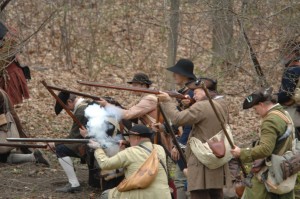 Eventually the British were routed, and as they fled, the militia followed pouring shot into the backs of the retreating enemy. The Patriots stopped at the river’s edge to wait for their horses to be brought up, as they intended to force the British back to Ninety-Six and attack that post. As they waited a courier arrived telling them that the British had defeated the Continental Army at Camden on 16 August and had overrun Thomas Sumter’s Brigade at Fishing Creek. They were advised to head north and west as the British would now move more resources into the Back Country.
Eventually the British were routed, and as they fled, the militia followed pouring shot into the backs of the retreating enemy. The Patriots stopped at the river’s edge to wait for their horses to be brought up, as they intended to force the British back to Ninety-Six and attack that post. As they waited a courier arrived telling them that the British had defeated the Continental Army at Camden on 16 August and had overrun Thomas Sumter’s Brigade at Fishing Creek. They were advised to head north and west as the British would now move more resources into the Back Country.
The victors mounted up and headed away from the battlefield leaving on the field sixty-three British dead and ninety wounded, and took with them seventy prisoners. The Patriots lost four men. One, sadly, was the hero Capt. Shadrick Inman. The Battle at Musgrove’s Mill had been a decisive victory with Patriot militia mauling and routing a superior force of British Provincials. It was wise to leave and live to fight another day.
And they did fight another day. Many of these men defeated Major Patrick Ferguson and his men at King’s Mountain, rode with Col. Thomas Sumter when he defeated Lt. Col. Banastre Tarleton at Blackstock’s and stood, shoulder-to-shoulder, at Cowpens and helped General Daniel Morgan defeat a British force commanded by Lt. Col. Tarleton.
However, it all started with the militia engagements in July and August, and, most notably, the Battle of Musgrove’s Mill. Would you not think that the site would have been preserved and revered through the years following the Revolutionary War? That was not the case. The site was abandoned and overlooked for over two hundred years! Musgrove Ford was used for generations, and a bridge was eventually built over the Enoree River at that site. Cotton fields flourished along the Enoree River until the land was depleted and erosion pockmarked the terrain. As people traveled the road, there was little evidence of the great battle that had been fought there.
Saving the battle site from obscurity
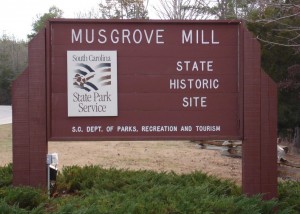 In the late 1990’s, historian Dr. George Fields determined to save the battlefield. “If the participants could march over forty miles behind the British lines to raid a fortified camp, face an enemy twice the size they expected, inflict more casualties on the enemy than in their ranks, and retreat in a forced march for two days to avoid capture behind the lines, we should, could and somehow would do the hard task of saving the battlefield,” said Fields. With the help of local citizens and businesses, he raised money to purchase a large part of the battlefield. Donnie Wilder, State Representative from Laurens County, persuaded the South Carolina Department of Parks, Recreation and Tourism to commit to establishing the property as an historic site. On 5 May 2003, the Musgrove Mill State Historic Site was dedicated—222 years after the battle fought there contributed to the victory of our Patriot forces and the founding of our United States of America.
In the late 1990’s, historian Dr. George Fields determined to save the battlefield. “If the participants could march over forty miles behind the British lines to raid a fortified camp, face an enemy twice the size they expected, inflict more casualties on the enemy than in their ranks, and retreat in a forced march for two days to avoid capture behind the lines, we should, could and somehow would do the hard task of saving the battlefield,” said Fields. With the help of local citizens and businesses, he raised money to purchase a large part of the battlefield. Donnie Wilder, State Representative from Laurens County, persuaded the South Carolina Department of Parks, Recreation and Tourism to commit to establishing the property as an historic site. On 5 May 2003, the Musgrove Mill State Historic Site was dedicated—222 years after the battle fought there contributed to the victory of our Patriot forces and the founding of our United States of America.
This month, when we celebrate the birth of our nation, we might consider the debt owed to these citizen soldiers and honor them. Are there sites in your area that could and should be saved after all these years? If it could happen in rural South Carolina, you might make it happen where you live.
*****
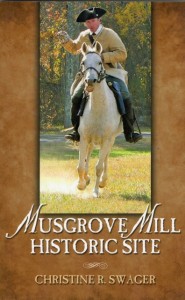 A big thanks to Christine Swager. She’ll give away an autographed copy of her book, Musgrove Mill Historic Site, in trade paperback format to someone who contributes a legitimate comment on this post today or tomorrow. Delivery is available worldwide. Make sure you include your email address. I’ll choose one winner from among those who comment on this post by Saturday 5 July at 6 p.m. ET, then publish the name of all drawing winners on my blog the week of 14 July. And anyone who comments on this post by the 5 July deadline will also be entered in a drawing to win a copy of one of my five books, the winner’s choice of title and format (trade paperback or ebook).
A big thanks to Christine Swager. She’ll give away an autographed copy of her book, Musgrove Mill Historic Site, in trade paperback format to someone who contributes a legitimate comment on this post today or tomorrow. Delivery is available worldwide. Make sure you include your email address. I’ll choose one winner from among those who comment on this post by Saturday 5 July at 6 p.m. ET, then publish the name of all drawing winners on my blog the week of 14 July. And anyone who comments on this post by the 5 July deadline will also be entered in a drawing to win a copy of one of my five books, the winner’s choice of title and format (trade paperback or ebook).
**********
Did you like what you read? Learn about downloads, discounts, and special offers from Relevant History authors and Suzanne Adair. Subscribe to Suzanne’s free newsletter.



